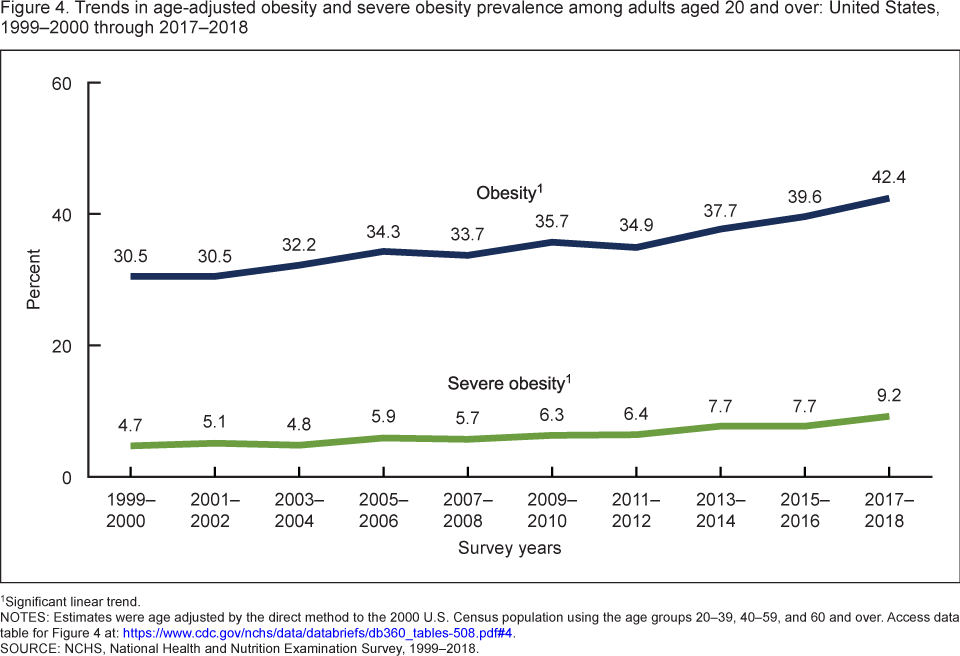1.1 The Current State of Human Health: The Obesity Epidemic
Obesity is a serious public health problem in the United States; it is linked to an increased risk for many chronic and costly diseases that can contribute to disability and death, such as:
- Heart disease (The leading cause of death in the U.S.)
- Cancers (The second leading cause of death in the U.S)
- Strokes
- Diabetes Mellitus
According to the Center for Disease Control (CDC), the prevalence of adult obesity, as defined by a Body Mass Index (BMI) of 30 or more, was 42.4% in 2017-2018. The BMI is a standard measure of body fat based on weight and height that can be used to screen for weight classifications that might lead to health problems. For children ages 2-19, the prevalence of obesity was 18.5%.
These trends are expected to continue to rise with projections that show by 2030, almost 50% of adults in the U.S. will be classified as obese. To put these percentages in perspective, approximately 15% of adults were classified as obese in the 1970s. From 1999–2000 through 2017–2018, the prevalence of adult obesity was 30.5.1

In addition to the human health costs of obesity, the CDC estimates an economic cost in the United States of $147 billion in 2018; individual medical expenses for people who have obesity are estimated $1,429 higher than those who are not obese.
How did obesity become a problem in the United States? Obesity has become a national epidemic due in part to the consumption of the modern western diet of industrialized processed foods and increasingly sedentary lifestyles. Industrialized processed foods refer to highly processed foods that often contain high levels per serving of unhealthy saturated and trans fats, added sugars, and sodium. When consumed habitually and in excess, these foods are linked to an increased risk of chronic disease.
“Ultra-processed foods were found to be low-cost, energy-dense, and nutrient-poor as compared to unprocessed foods. These findings resonate with past studies suggesting ultra-processed foods as being energy-dense, high in saturated fat, added sugar, and salt, and poor sources of protein, dietary fiber, and micronutrients (16, 29).”2
The Standard American Diet Includes (SAD): |
|
FOOTNOTES
1 Hales CM, Carroll MD, Fryar CD, Ogden CL. Prevalence of obesity and severe obesity among adults: United States, 2017–2018. NCHS Data Brief, no 360. Hyattsville, MD: National Center for Health Statistics. 2020

